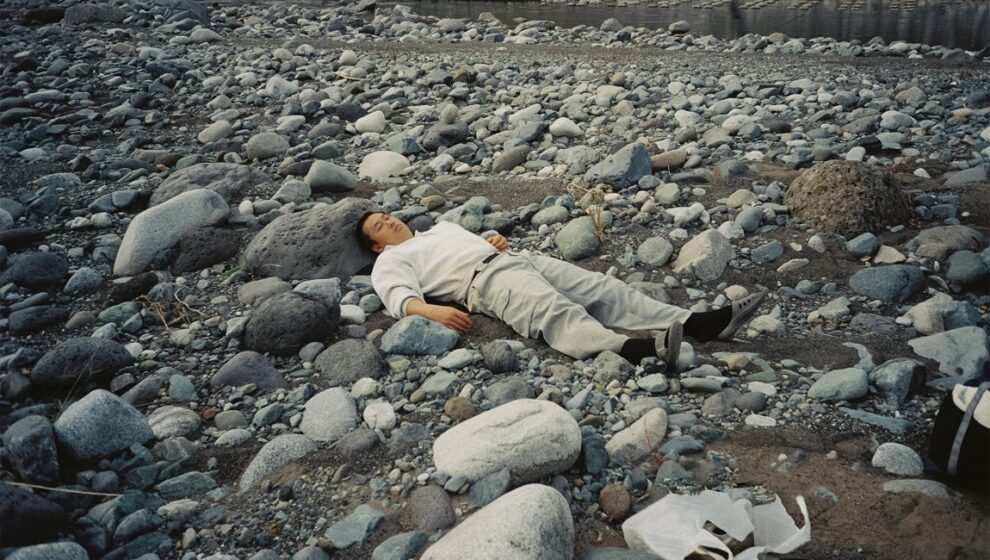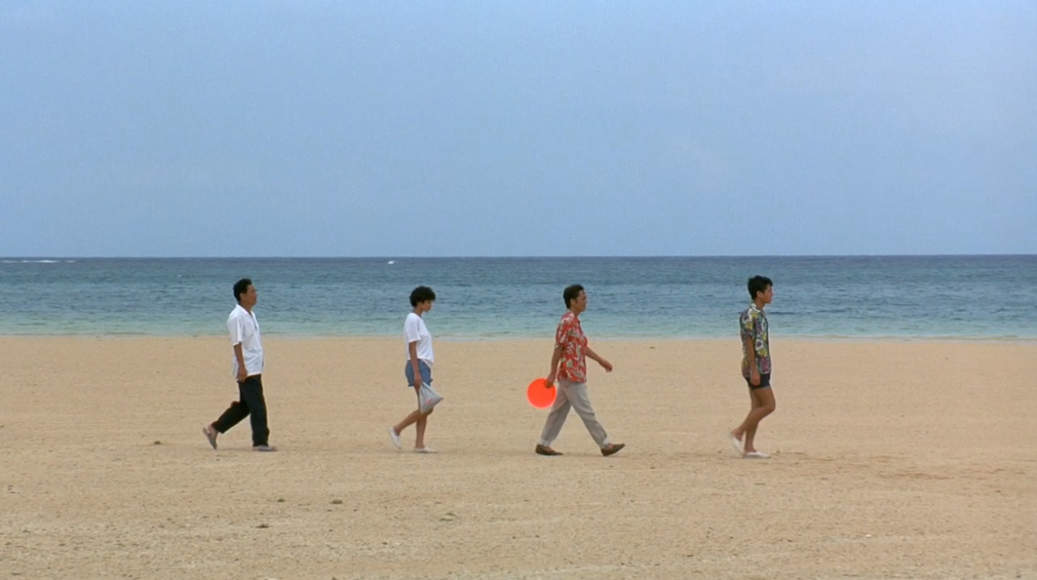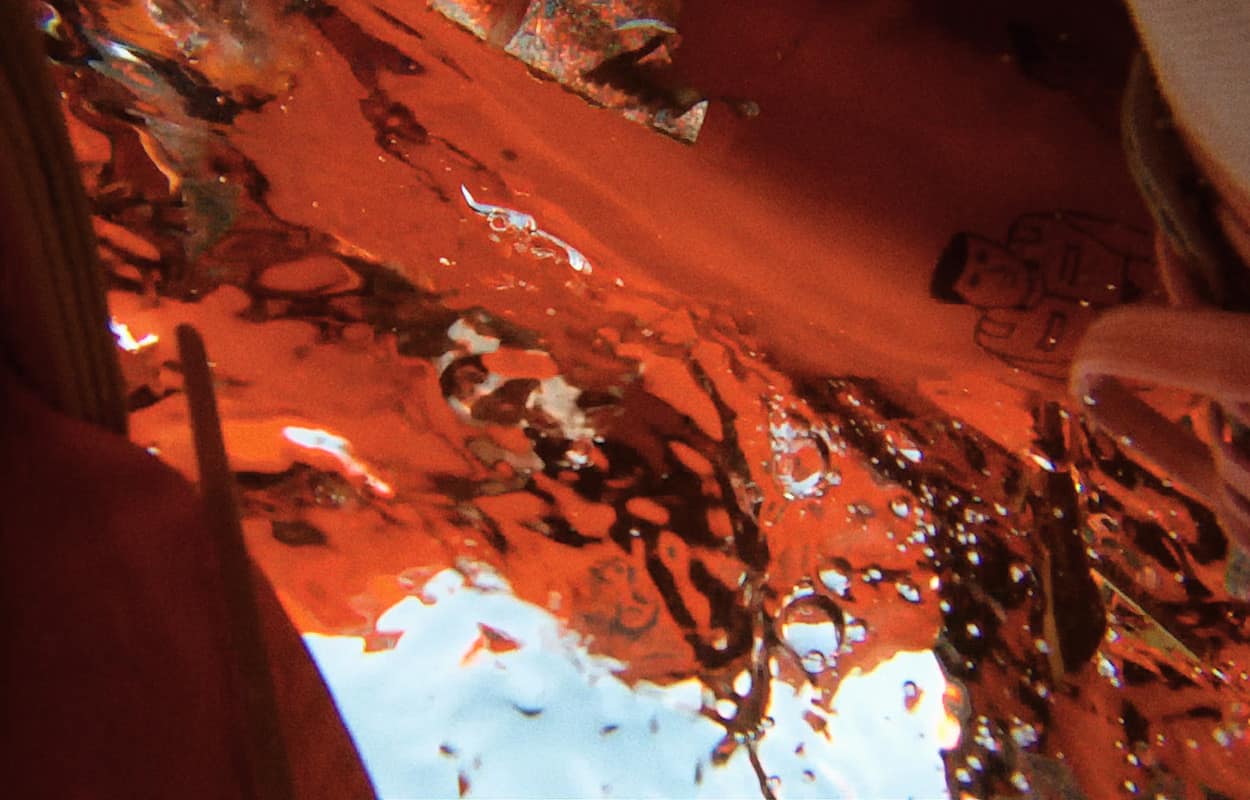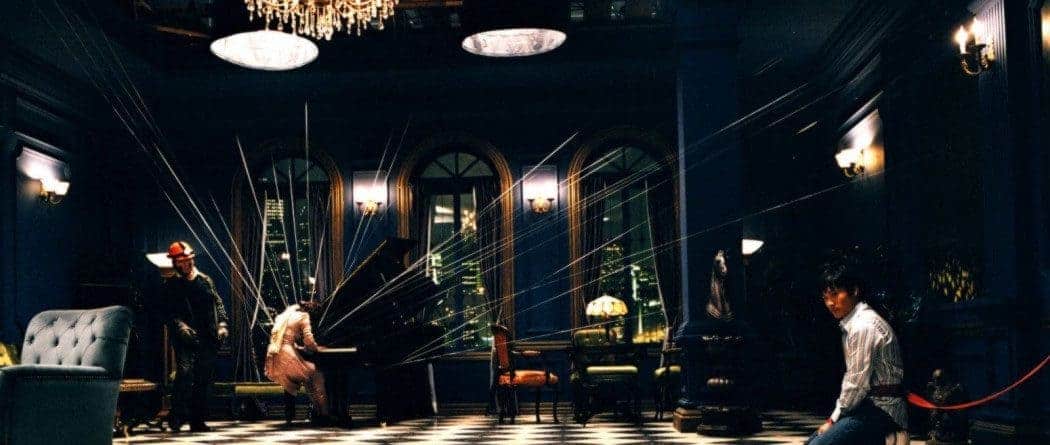by Pawel Mizgalewicz
What does it mean to be an adult? The ever-elusive question does not get any less complicated if we're taking a Western look at Japan – a country where people pretty commonly live with their parents at least until marriage, where a quarter of people aged under 40 is virgin, but on the other hand, even schoolchildren tend to be very busy with a lot of duties, “useful” activities and discipline. And while you can define maturity in many ways, you could easily say that what we associate the most with the word „adulthood” in the West is exactly about being busy. When you're “adulting”, your day is filled with time-consuming, unexciting yet necessary tasks, and while you spend every week dreaming that soon it will get looser, deep down you know that only as a child did you have actual “free time” – time devoid of any goals and productivity, time to wander around, do basically nothing, time to waste. Tatsunari Ota's “There Is a Stone” is mostly a film depicting such state of non-busy activity. Presumably, it's a tale about the joy of idleness – but, to be honest, also about its awkwardness. Nothing here really feels to be in its place, not in our (or Japanese) society.
There Is A Stone is screening at New Horizons

As a proper festival arthouse proposition, “There Is a Stone” excels in obscurity, and thus describing the protagonist or the plot wouldn't be easy. In a peaceful small-town offroad area, a woman visiting from Tokyo (vaguely “for work”) wanders around, perhaps quite lost, looking for “something to see”. When a group of children playing football in the sand asks her to join, fun is had, but when you think about it, it's easy to start to wonder why exactly the woman would be roaming alone on such outskirts in the first place. Doesn't she have anything real to do? Soon, she is joined by a man who is throwing stones by the river. Somehow, they begin spending the time on idle simple fun, of the “children before they got addicted to smartphones” variety. They walk around with an almost drunken absence of direction or pace, and mostly play with stones.
The manner of their play seems to vary between actually playful and borderline just bored. They try skimming them on water's surface, competitively throw stones at one another, look through the shoreline and under the water searching for attractive-looking stones, waddle through the water… If that sounds a bit too much stone-centric for your taste in full-length feature movies, might we mention the characters also play with sticks, the sand etc., and the film's arguably most extreme, most personally powerful moment revolves around the idea of simply piggybacking.
Their “content” is hardly the point, the point is: time doesn't matter, neither does space. These two people met when one of them decided to walk through the river – the scene hardly a cinematic spectacle, the river being waist-deep. The act is socially subversive enough, though, to visibly frighten, but then seemingly also encourage the other person. In that moment, when the barrier of the usual acceptable social distance breaks, the duo seemingly becomes detached from the norm, and able to walk their own path. They wander through the stones, sands, or over the fences, like children do, ignoring what the established walking path is.
The fact that they're adults never becomes easy to ignore – we are left to wonder what precisely are the feelings brewing inside the two. As the woman is young and pretty, we may assume the man is attracted to her, although nothing really is said or shown. Some will see it as downright creepy, while some perhaps as charming, how good he already seems to be at this stuff: this is a grown man that clearly is into walking around aimlessly, feels comfortable with it, and that says a lot in absence of a more literal story background. There are changes happening within both characters, there are signs on sight, but almost all of them could be described as ambiguous.
The movie is often described as being about loneliness or social isolation. The final act surely does touch on that note, shedding some light on characters' private, “real” lives, and the interpretation is definitely worth a think – but we still stop just short of learning enough about them to be too confident about the tale's conclusions. Premiered in Japan last year, shown in Europe at Berlinale and now presented at Wrocław's New Horizons, the top film festival of Poland, “There Is a Stone” could be described as predictably “artsy”.
Moving really slow, understated to the point of being kind of boring, and with the 4:3 monotonous landscapes unlikely to leave you in awe – for some moviegoers it will be a picture brave enough to wade through murky waters, others will just say that it is treading water. In the end, the thoughts we have after it might be more exciting than the screening itself, but that might be a part of the program, looking for human clues more important than the bottom line. After all, as we learn here – it might be very hard to find a single lost stone in the river, but it's sure great if you like watching a lot of water flow.














